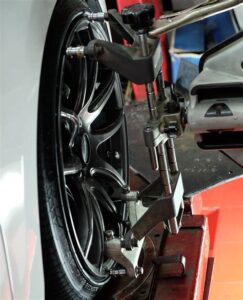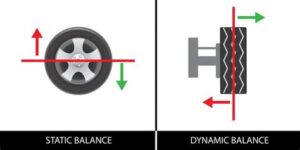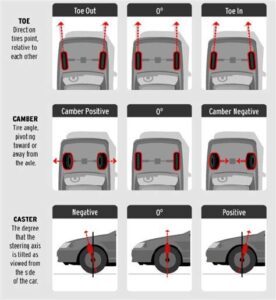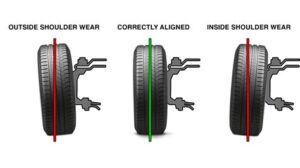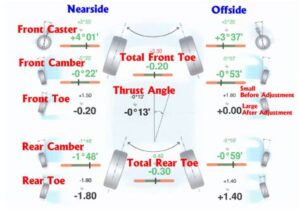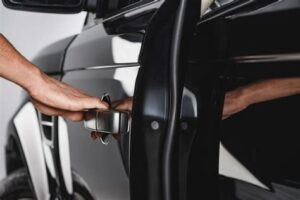In the world of car audio, achieving the perfect sound quality is an elusive goal for many enthusiasts. But one crucial element often overlooked is time alignment. This technique optimizes the timing of audio signals, ensuring that sound waves from different speakers reach your ears simultaneously. In this article, we will explore the intricacies of time alignment in car audio systems, guiding you through the setup process, the numerous benefits it offers, and common mistakes to avoid. Whether you’re a seasoned audio aficionado or a newcomer seeking to enhance your listening experience, understanding time alignment will elevate your vehicle’s sound system, providing a rich, immersive audio experience on every drive. Prepare to transform your ride into a concert-like setting with expert insights and practical tips that promise to revolutionize the way you experience music in your car.
Understanding Time Alignment For Optimal Sound Quality
Time alignment is a critical aspect of tuning car audio systems to achieve the best possible sound quality. It involves synchronizing the sound waves produced by different speakers in a vehicle so that sound reaches the listener’s ears at the same time. This process helps to create a more coherent and immersive listening experience by minimizing phase issues and ensuring that audio signals blend seamlessly.
The basic principle of time alignment is rooted in the fact that sound travels at a finite speed (approximately 1,125 feet per second at sea level). In a typical car audio setup, speakers are often positioned at varying distances from the listener, leading to a natural delay in sound arrival times. Without proper alignment, this can result in a disjointed audio experience, where certain frequencies or sounds overshadow others.
To illustrate the importance of time alignment, consider the following typical speaker setup in a car:
| Speaker Type | Distance from Listener (inches) | Sound Arrival Delay (milliseconds) |
|---|---|---|
| Front Left | 30 | 33.6 |
| Front Right | 30 | 33.6 |
| Rear Left | 50 | 55.2 |
| Rear Right | 50 | 55.2 |
As noted in the table, the rear speakers produce a longer delay compared to the front speakers. This highlights the need to adjust the audio settings to account for these distances, ensuring that all speakers are effectively synchronized.
Investing time in setting up time alignment can lead to a significant improvement in audio clarity and detail. The process may involve using digital signal processors (DSPs) or head units equipped with time alignment features. By carefully measuring distances and configuring delay settings, listeners can create a more balanced and accurate soundstage, resulting in a richer musical experience.
How To Set Up Time Alignment In Car Audio Systems
Setting up time alignment in your car audio system is crucial for achieving optimal sound quality. Here’s a step-by-step guide to help you accomplish this:
- Gather the Necessary Tools: Before you start, ensure you have a frequency generator or a dedicated time alignment measuring tool, a sound level meter, and a pen and paper for notes.
- Determine Listening Position: Sit in your usual listening position. It’s essential to calibrate the audio settings based on where you spend most of your time in the vehicle.
- Measure Distances: Measure the distance from each speaker to your listening position. This includes the front left, front right, rear left, and rear right speakers. Write down the distances accurately, as this data will be essential for setting the time alignment.
- Calculate Delay Settings: Using the speed of sound (approximately 1,130 feet per second or 344 meters per second), calculate the delay needed for each speaker based on its distance from your listening point. Use this formula:
Delay (ms) = Distance (feet) / 1,130 - Access Your Audio Processor: If you’re using a digital signal processor (DSP), access it through the software or the unit itself. For traditional setups, adjust the settings directly through the head unit.
- Input Delay Settings: Enter the calculated delay settings for each speaker into the DSP or head unit. This will ensure that the sound from each speaker reaches your ears simultaneously, thereby improving the overall audio experience.
- Test and Fine-tune: Play music and evaluate the sound quality. Make minor adjustments to the delay settings as necessary. Trust your ears; the goal is to achieve a cohesive sound stage where the music feels consistent and well-balanced.
- Final Calibration: Once satisfied with your adjustments, perform a final check. Ensure that all speakers are in sync before securing your settings for the long term.
By carefully setting up the time alignment in your car audio system, you will enhance the clarity and detail of your music, offering you a much more enjoyable listening experience on the road.
The Benefits Of Using Time Alignment In Your Vehicle
Utilizing time alignment in your vehicle’s audio system can significantly enhance your overall listening experience. Here are some key benefits to consider:
- Improved Soundstage: Time alignment adjusts the audio signals so that sound waves from different speakers reach the listener’s ears simultaneously. This creates a more cohesive soundstage, allowing you to perceive the music as if it is coming from a specific point, rather than from multiple disconnected sources.
- Enhanced Clarity: By ensuring that sound from each speaker arrives at the listener’s position at the right moment, you can reduce phase issues that often muddy audio clarity. This results in cleaner vocals and sharper instrument separation.
- Personalized Listening Experience: Time alignment allows for tuning that can cater to individual preferences and listening positions. By adjusting the delay for each speaker, users can customize their sound experience according to where they sit in the vehicle.
- Compensation for Different Speaker Positions: In many vehicles, speakers are not mounted at equal distances from the listeners. Time alignment compensates for these discrepancies, ensuring a balanced audio experience regardless of speaker placement.
- Increased Bass Impact: Properly aligning the timing of subwoofers with the rest of the audio spectrum can greatly enhance bass response. This ensures that the low frequencies are felt and heard at the right moments, adding depth to the overall sound.
Incorporating time alignment into your car audio setup not only optimizes sound quality but also transforms your driving experience into a more enjoyable and engaging one.
Common Mistakes In Time Alignment And How To Avoid Them
When setting up time alignment in your car audio system, several common mistakes can hinder your efforts to achieve optimal sound quality. Recognizing and addressing these pitfalls is crucial for a better listening experience.
| Mistake | How to Avoid |
|---|---|
| Incorrect Measurement of Speaker Distances | Use a measuring tape to accurately assess the distance from each speaker to the listening position, ensuring precise adjustments in the time alignment settings. |
| Neglecting Frequency Response | Consider frequency response when configuring time alignment. Use an equalizer to complement the alignment for a balanced sound profile. |
| Overlooking Phase Issues | Check the phase relationship between speakers. Make necessary adjustments to avoid cancellation and ensure cohesion in sound. |
| Improper Use of DSP Settings | Familiarize yourself with your Digital Signal Processor (DSP) settings. Understand each parameter to maximize the benefits of time alignment. |
| Ignoring Listening Tests | Conduct listening tests after adjustments. This real-world evaluation helps you tweak settings for personal preference and vehicle acoustics. |
By being aware of these common mistakes and proactively addressing them, you can significantly improve the effectiveness of your time alignment setups, leading to a richer auditory experience in your vehicle.
Enhancing Your Listening Experience With Time Alignment Techniques
When it comes to maximizing your car audio experience, time alignment techniques play a crucial role in delivering a truly immersive sound. By adjusting the timing of audio signals from your speakers, you can significantly improve clarity, depth, and overall audio quality. Here are some effective strategies to enhance your listening experience using time alignment:
- Speaker Positioning: Ensure your speakers are properly positioned and angled towards the listener’s ears. This can impact how sound waves interact, and time alignment can help compensate for any distance discrepancies.
- Delay Settings: Utilize the delay settings on your audio processor to adjust when each speaker reaches your ears. By calculating the distance from each speaker to the listening position, you can set appropriate delay values to synchronize sound arrival times.
- Equalization: Integrate equalization techniques alongside time alignment adjustments. Tuning your system can help eliminate unwanted frequencies and ensure a balanced sound profile that complements the time-aligned audio.
- Test and Iterate: After initial adjustments, listen to a variety of music genres to evaluate the effectiveness of your time alignment settings. Be prepared to make iterative refinements based on your preferences and the acoustics of your vehicle.
- Use Quality Source Material: High-quality recordings will reward your efforts in time alignment techniques. Ensure that your audio source is capable of delivering the detail needed to fully realize the benefits of a finely-tuned car audio system.
Implementing these time alignment techniques will not only improve the fidelity of your car audio system but also transform your daily drives into a rich auditory experience. Ultimately, the goal is to achieve a soundstage that feels cohesive and impactful, allowing you to enjoy your favorite tracks like never before.
Frequently Asked Questions
What is time alignment in car audio?
Time alignment in car audio refers to the technique of adjusting the timing of sound from various speakers so that they reach the listener’s ears simultaneously, creating a more cohesive audio experience.
Why is time alignment important in car audio systems?
Time alignment is crucial because it enhances sound clarity and imaging. Properly aligned audio signals prevent phase issues that can lead to a muddled and distorted sound.
How can I achieve time alignment in my car audio system?
Time alignment can be achieved through digital signal processors (DSPs) or by manually adjusting the speaker positions and delays in your audio system’s settings, depending on the equipment used.
What tools are needed for time alignment in car audio?
To achieve time alignment, you’ll typically need a digital signal processor (DSP), a measurement microphone, and audio calibration software to analyze and adjust the audio signals.
Can all car audio systems be time-aligned?
While many modern car audio systems are capable of time alignment, systems that lack digital signal processing features may require additional equipment or upgrades to perform this adjustment effectively.
What are some common mistakes when setting up time alignment?
Common mistakes include incorrect measurement of speaker distance, neglecting to adjust for listener position, and not allowing for the acoustics of the car interior.
How does time alignment affect the overall listening experience?
Proper time alignment significantly enhances the overall listening experience by improving soundstage, clarity, and making the audio more realistic, allowing listeners to better appreciate the depth and detail of the music.
